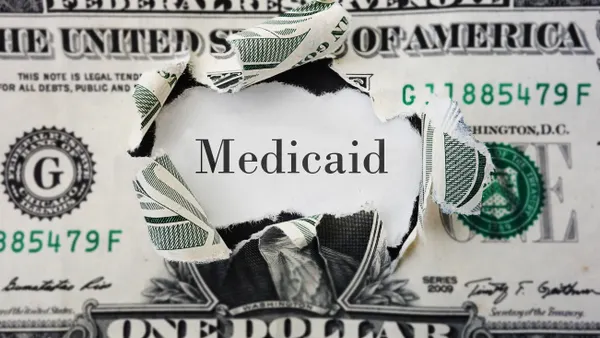Dive Brief:
- The average cost of employer-sponsored health insurance climbed to $17,496 in 2025, up 6% from the year before and in excess of rates of inflation and wage growth, according to Mercer’s recent 2025 National Survey of Employer-Sponsored Health Plans.
- Costs are projected to continue to rise another 6.7% in 2026, making the average cost per worker $18,500, the survey found.
- A “sharp growth” in prescription drug spending, including pricey GLP-1 weight-loss medications, helped fuel the increase, Mercer said. Prescription drug spending was up an average 9.4% among large employers, those with 500 or more workers, while GLP-1 coverage for weight loss among the same group climbed to 49% in 2025 from 44% the previous year.
Dive Insight:
Reports of ever-increasing healthcare costs are not in short supply.
Last month, KFF’s 2025 Employer Health Benefits Survey showed that family premiums for employer-sponsored health insurance were up 6%, or $1,408, compared to last year. All told, family premiums were on average $26,993 in 2025, or higher than the cost of a new Toyota Corolla Hybrid, as KFF President and CEO Drew Altman put it.
Meanwhile, HUB International’s 2026 Benefits Cost Trend report, released at the same time, predicted that medical and prescription benefit costs will increase 8% to 10% next year, driven in part by the use of high-cost drugs, such as GLP-1s and auto-immune medications.
But all hope is not lost, according to a global health and risk leader for integrated and global solutions at WTW.
“One glimmer of hope for employers is that investment in technologies, including AI, is leading to higher costs at the moment but following this phase new technologies hold the promise of reducing healthcare cost trends in the longer term,” the WTW leader said earlier this month.
In the meantime, there are steps employers can take to manage costs, Mercer’s U.S. Health and Benefits Leader Ed Lehman said.
“Employers want to minimize increases in paycheck deductions while ensuring employees across all pay levels can afford the care they need, when they need it,” Lehman said. “It’s a tough challenge, but there are ways that employers can make healthcare more affordable for employees.”
That involves offering employees more medical plan options, encouraging them to choose high-performing providers and offering specialized health programs, he said.
For example, 32% of large employers provided a standalone specialized diabetes program in 2025, 28% offered a musculoskeletal program, and 23% offered a fertility program, Mercer found. These programs are typically low cost or free and delivered virtually, per the survey of 2,010 employers.
















